Review: Scan
Publisher: Parker Brothers
Year: 1970
Tagline: SPLIT-SECOND MATCHING GAME

how we met
I saw Scan one day, and I bought it. Simple as that. Scan is not the type of game that has a loud voice that calls to you from the thrift store shelves. But if you happen to notice Scan and look it up, you will find plenty of interest. Or at least I did.
how it plays
Scan is a pattern recognition, speed game with two different decks of cards that each have specific designs on them in four quadrants. The blue cards get placed around the table so that each player can easily reach them. The tan cards get shuffled and placed in the plastic card holder, with the special COVER CARD on the top.
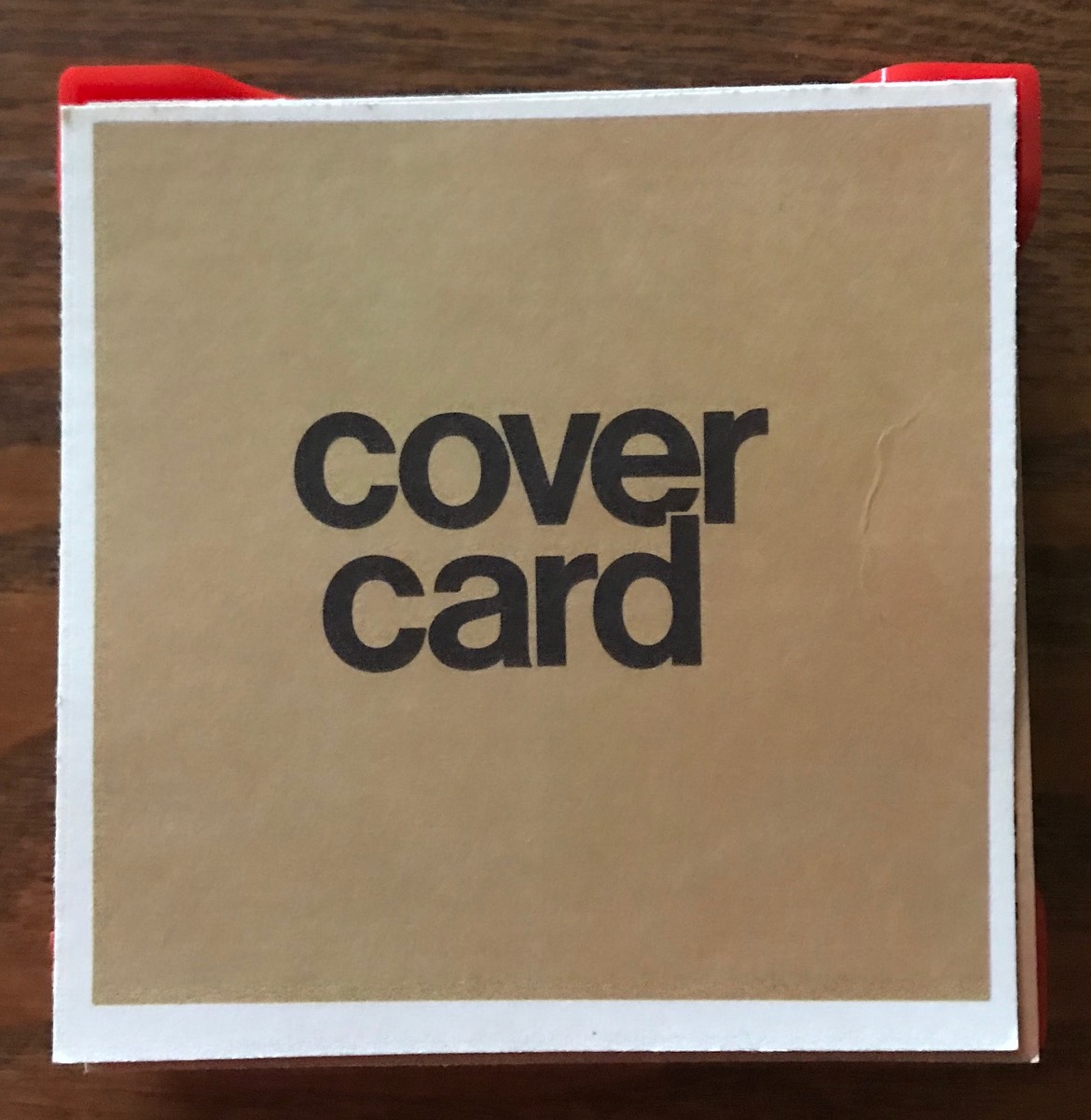
NOTE: I notice the cover of the game shows tan and blue swapped. My instructions show tan cards are the deck, and you can see the COVER CARD is tan. But check your instructions or go off your COVER CARD to be safe.
Cards include four different types of design areas: color, shape, pattern and position. The first player decides which design pattern will be used and removes the COVER CARD. Then all players quickly try to find the single blue card that will match the tan card.
When a player thinks they have found the correct card, they touch it. Speed is critical here, but players must also be careful! If they touch an incorrect card they are not only out of the round, but the winning player gets to take one of their points (if they have any)!
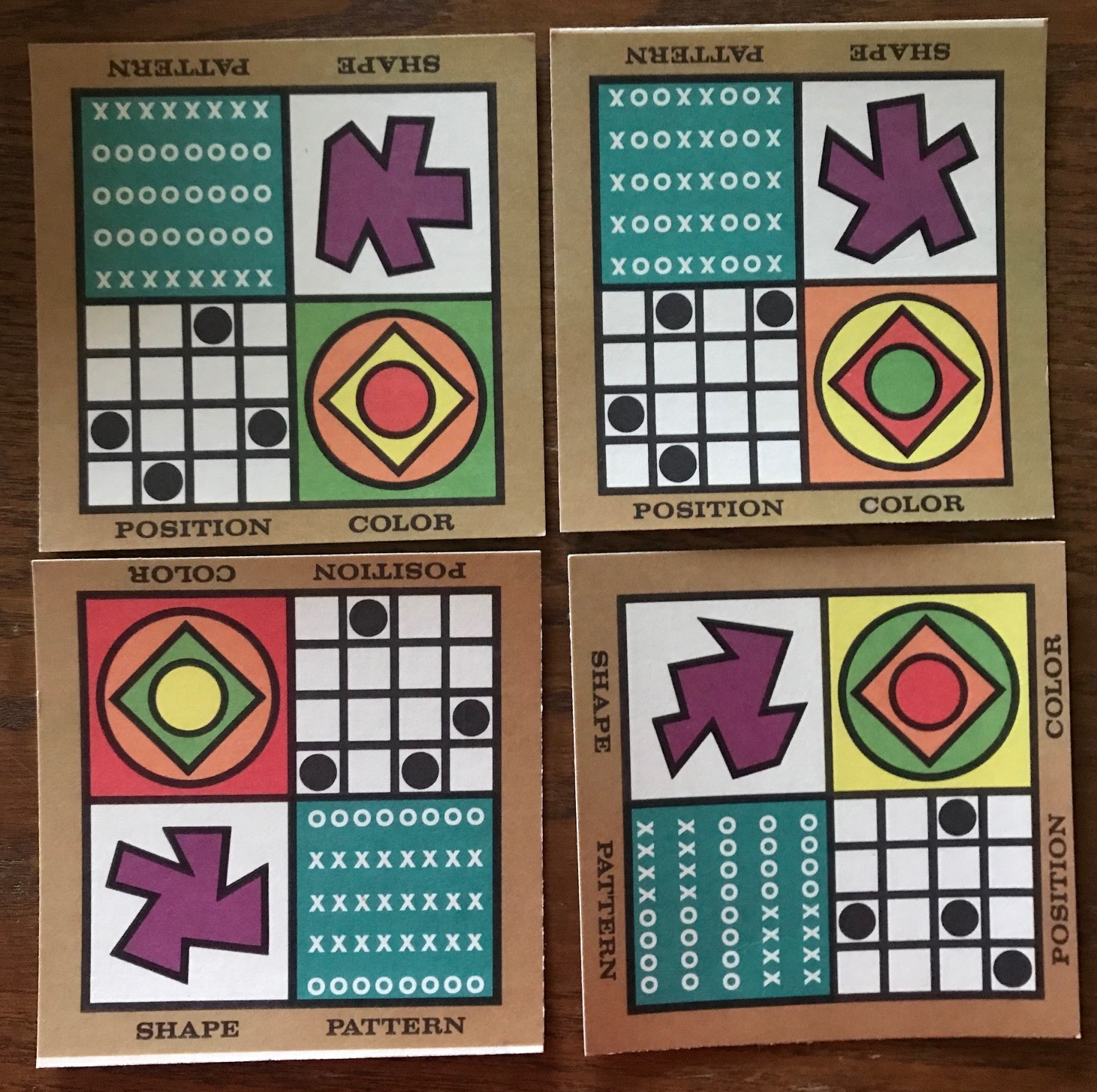
If a player is the first to touch the correct card then they get to keep the tan card, and the next tan card showing instantly begins the next round!
After all tan cards are gone, the player with the most points (cards collected) wins Scan!
how it went
We played Scan the first time using the “Dealer’s Choice” variant, which means the winning player gets to choose which design is used next. Scan already borders on a skill game, and this variant seems to allow players to play to their personal strengths. And it seemed like it would prevent players from bothering to memorize cards near them. And it seemed more fun and challenging.
NOTE: The game also suggests a “Bluffo” variant that sounds fun, check it out
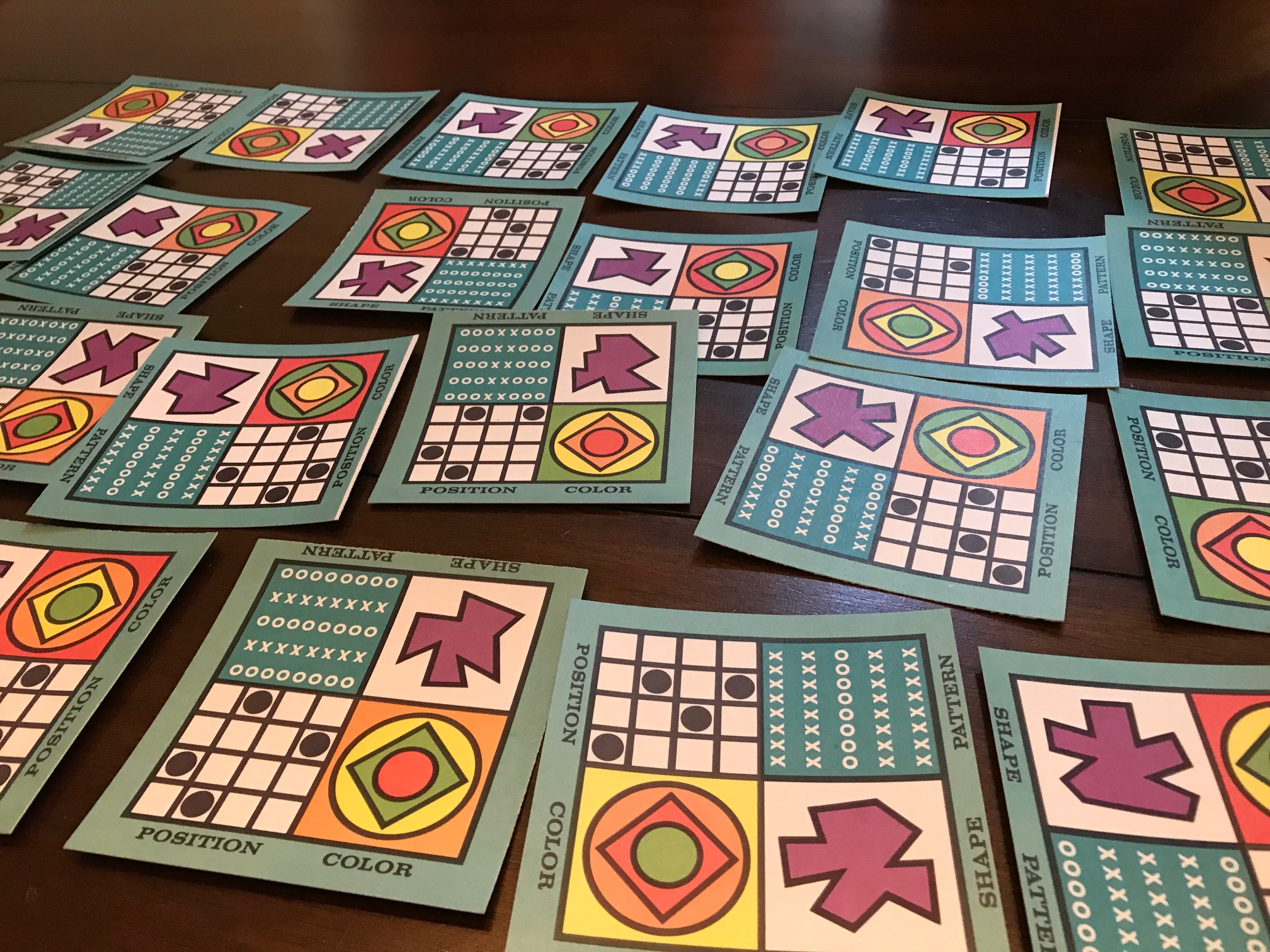
At some point Bill suggested that we sort all the blue cards on the table so that they are oriented the same direction. But I like them random. It makes the game a lot more challenging, particularly with the Position designs.
To me personally, Color and Pattern were easiest because you could quickly scan and disregard cards. I was okay at Shape. And as mentioned, Position was tough at times due to orientation of the cards.
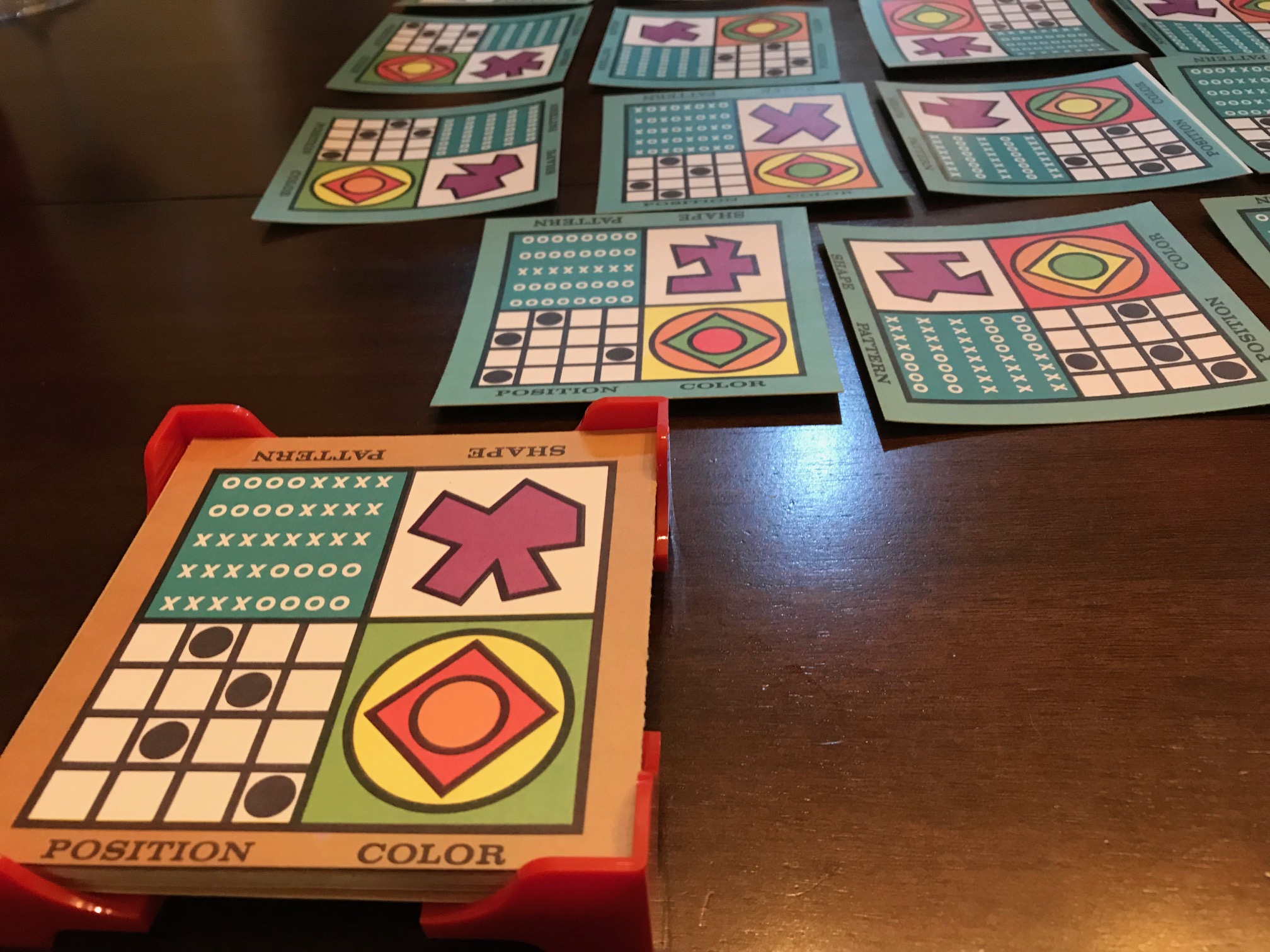
We played a similar game to this (that I have yet to write a review on) called Monster Mash that is violent and amazing. In that game a machine is randomly creating a monster and you have to find the matching monster card and pick it up with your plastic monster hand before other players. It gets very animated.
FUN FACT: as of this writing, Monster Mash and Scan enjoy identical average ratings on BGG at 5.7. This makes perfect sense to me since Monster Mash requires slamming down plastic bits, which is really fun, while Scan is more sophisticated by allowing multiple patterns.
What surprised me about Scan is that there aren’t really players slamming their hands onto cards – at least in our case this only happened a few times. Instead players usually did a super quick back and forth visual check and slowly, softly placed their hand on their chosen card. We only had two instances of close calls where we had to decide who was there first. And I think we all picked the wrong card on at least one occasion.
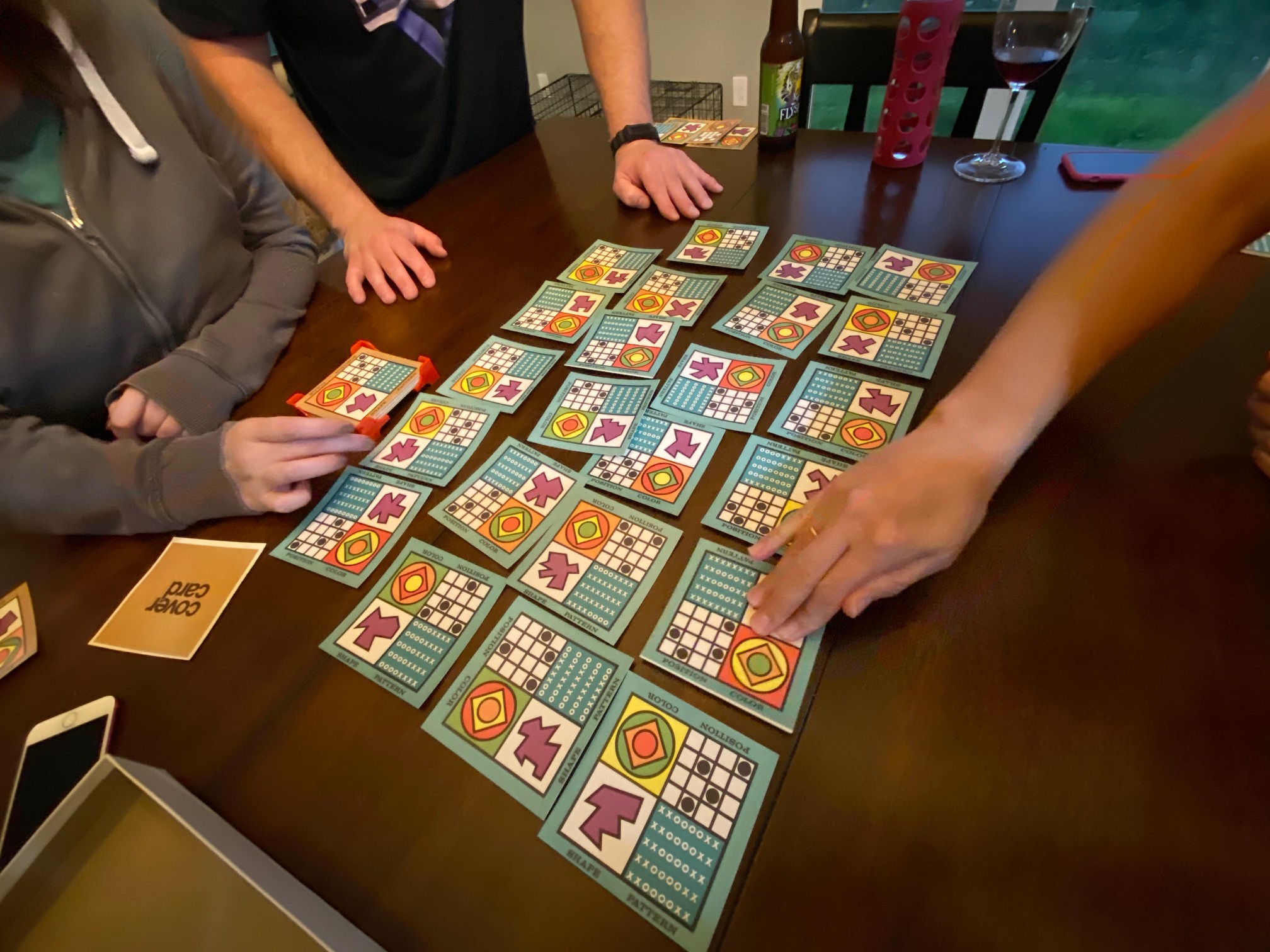
Bill and Keri were ahead for most of our play while John and I lagged behind. At some point I caught my stride and got a number of points back to back (or nearly). And when the last tan card was claimed, we had a three way tie between Bill, Keri, and me. Getting a three way tie is kind of ridiculous, but I won’t know until we play some more whether that is common or a problem. I doubt it would happen without the “Dealer’s Choice” variant.
play or pass
Play! I think I would enjoy Scan even if I never won. The game is a challenge, a small puzzle, and you can improve at playing this type of game. And that’s where my biggest gripe is, and it’s one you’ve heard from me before. As much as many board game players detest luck, I detest games that are too reliant on any specific skill. And pattern recognition is definitely a skill. But Scan’s introduction of different design choices for recognition definitely mitigates that concern and does a lot to even the playing field. This game’s really fun.
I’ve seen Scan twice at thrift, so it’s out there. I think Scan is the type of game that is not for everyone, so you will see it make its way into the thrift cycle every so often. Or follow it online and you can probably find it for a decent price. But I’m keeping my copy!